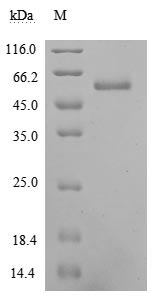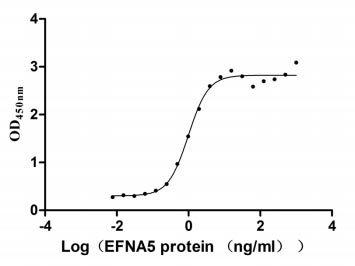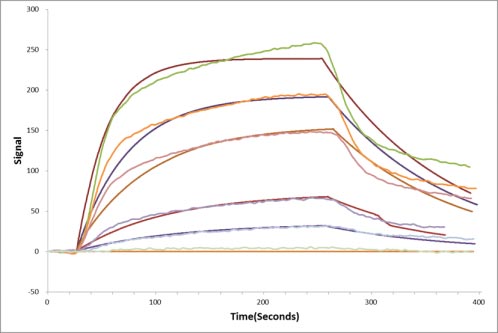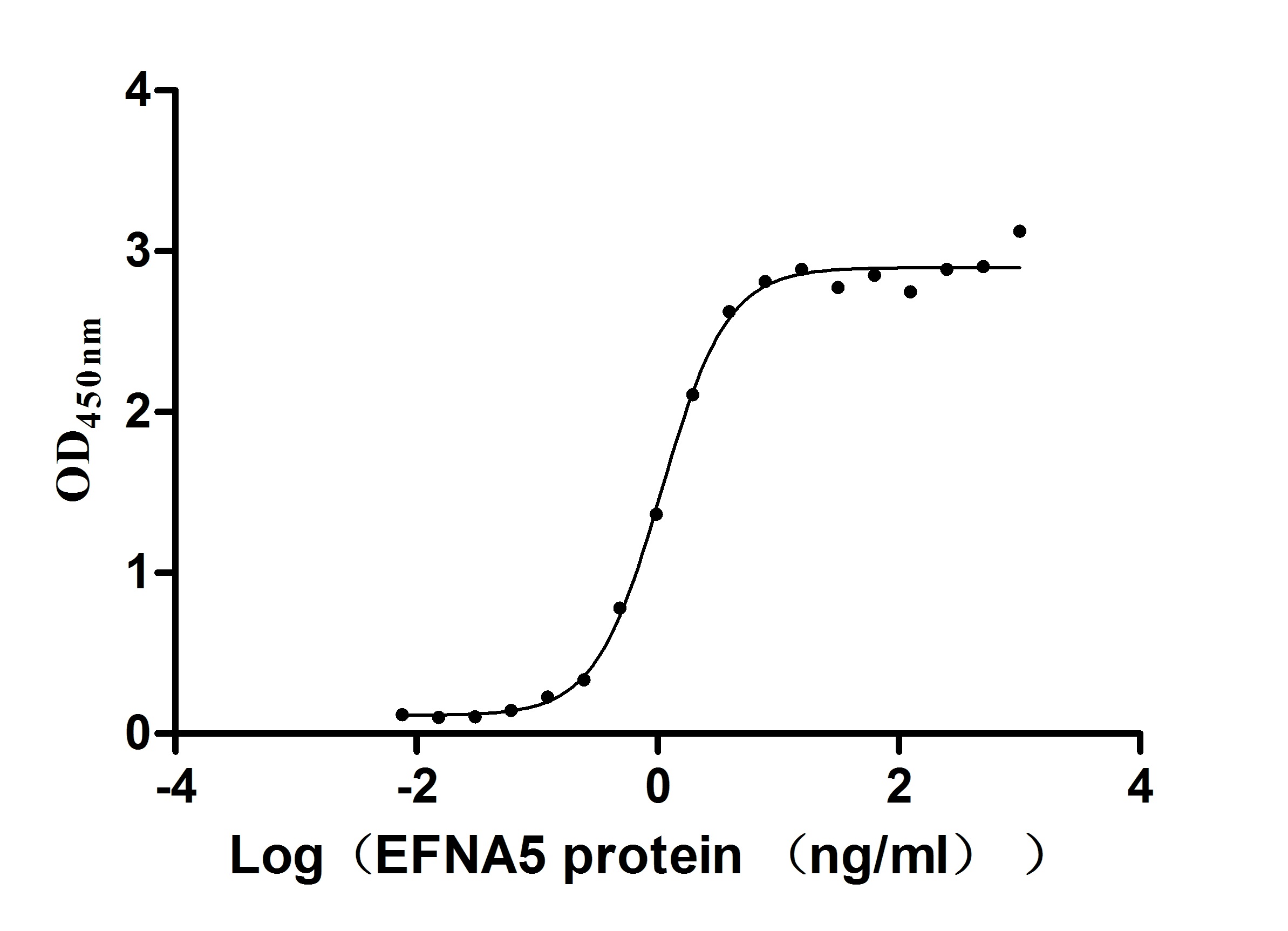This Recombinant Human Ephrin-A5 (EFNA5) is expressed at the full length of the mature protein in mammalian cells, which corresponds to the 21-203aa region of human EFNA5. The protein has a TEV-linker and an immunoglobulin Fc domain fused on the C-terminus, with a molecular weight of 50.1 kDa. This protein product has a purity higher than 90%, as determined by SDS-PAGE. In the LSPR assay, it has an affinity constant of 13.8 nM against human EPHA3 protein. Also, the recombinant EFNA5 has an EC50 of 0.8674-1.119 ng/ml for binding to EPHA3, as determined by ELISA binding assay. The final product contains low endotoxin, with less than 1.0 EU/µg as determined by the LAL method. The EFNA5 is a promiscuous cell surface GPI-bound ligand that permits the cellular adhesion and contact-dependent directional signaling. The function of EFNA5 is vital for the nervous system development via axion fasciculation and the reorganization of the cytoskeleton. This product can be used in cancer research as cell adhesion reagent, ELISA reagent, and control for novel ligands for the associated ephrin receptor.










